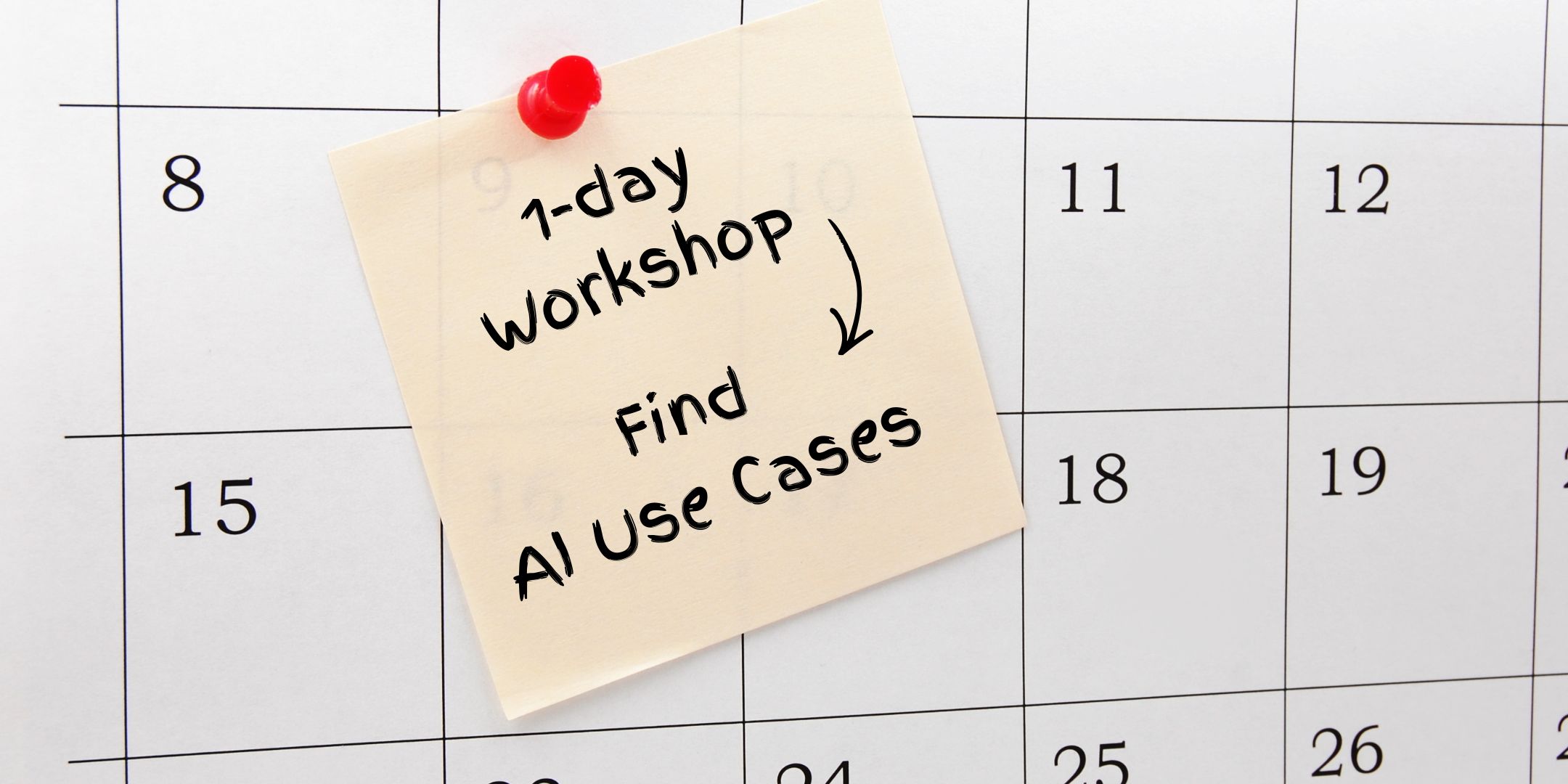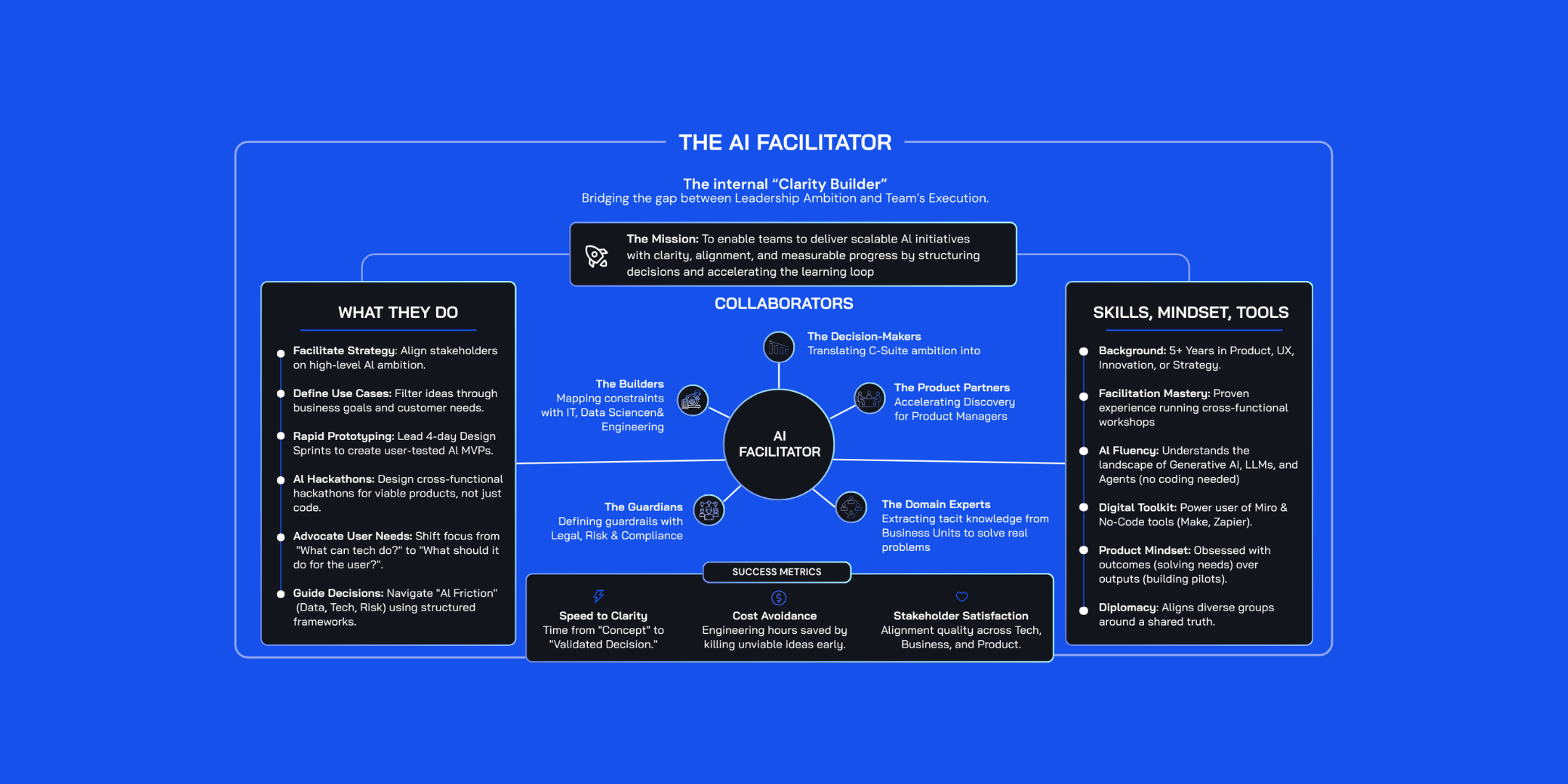Remember Everything! Memory Hacks for Workshop Facilitators

Running workshops, especially large-scale ones with high stakes, can feel like a mental marathon. Keeping everyone engaged, remembering details, and navigating unfamiliar territory all require a sharp mind, a great memory. But fear not, facilitators! This article equips you with tips and tricks to stay sharp and on top of your game throughout long, intensive workshops.
Here at Design Sprint Academy, we understand this challenge. We train large teams in design sprints and problem framing, we run corporate innovation challenges, constantly diving headfirst into new industries and organizational cultures. It's a whirlwind of fresh faces, complex problems, and unfamiliar landscapes. Remembering everything in this fast-paced environment is overwhelming.
So, how do you keep your sharpness and remember all the important details?
Let's tackle the first hurdle: remembering the many new faces you meet at workshops.
1. How to Remember Workshop Participants' Names
Forgetting someone's name right after they introduce themselves happens to the best of us. But there's a simple trick to improve your memory – the memory palace technique.
What is a "Memory Palace"?
Imagine your grandma's house – the one you visited countless times as a kid. You can practically walk through it in your mind, picturing the creaky stairs, the comfy armchair in the living room, and the chipped mug collection by the sink. The Memory Palace technique, also known as the method of loci (loci is Latin for "places"), works by leveraging this kind of familiarity.
Here's the trick: you mentally place information you want to remember in specific locations within this familiar environment. This creates a vivid mental map that strengthens your recall. Each piece of furniture, landmark, or quirky detail in your grandma's house becomes a "locus" where you can store information for easy retrieval later.

Here's how you can use your grandma's house or your childhood home (or any familiar place) as a memory palace to remember the names of everyone you meet in a workshop:
- Visualise your home: Mentally walk through your childhood home, picturing each room in detail. Focus on specific landmarks or furniture that stand out in your memory.
- Assign participants to rooms: As you meet each workshop participant, assign them a specific room in your childhood home. Consider using a logical association - someone who loves to cook could be placed in the kitchen. Or, you can simply go in order, starting from the front door and assigning each person to the next room they encounter in your mental walk-through.
- Create memorable images: Within each room, visualize the participant alongside an object or action that reinforces their name or something you learned about them. This could be a visual pun on their name, an object related to their profession, or a funny scenario based on their personality. For example, if someone named Michael loves basketball, visualize a giant, inflatable Michael Jordan mascot next to your childhood rocking chair.
- Review and Repeat: Take a few minutes to mentally walk through your childhood home again, encountering each participant and their associated image. Repeat this process a couple of times to solidify the link between the person, their image, and their name.
By leveraging the familiarity and emotional connection of your childhood home, you can create a powerful memory palace for remembering workshop participants' names. This simple approach can be just as effective, if not more so, than using the workshop space itself. So next time you meet someone new at a workshop, put the memory palace technique to the test! You might be surprised at how well you remember everyone's name.
The memory palace technique isn't limited to your childhood home! Here's how you can leverage the workshop space itself to remember participant names:
- Create a mental map of the workshop room and even draw the tables on a sticky note.
- As participants settle in, write their names next to their seating. This simple act reinforces the connection between the name, the person, and their physical location.
By using the workshop layout as your memory palace, you'll be able to quickly recall names throughout the day by mentally revisiting the seating chart. This technique is particularly helpful if you struggle to connect names with faces during the initial introductions.

2. How to remember important insights and data points through the workshops
So, how do you retain all those brilliant ideas, decision-making rationales, and crucial data points that emerge during the workshop? Here's where we need to understand the Ebbinghaus forgetting curve. It describes our brains tendency to forget information quickly if we don't actively try to remember it. It's essentially a graph that shows how much information we remember after a certain amount of time has passed.

Now, let's dive into the key concepts of this curve to understand how to combat it and keep those workshop insights fresh:
- Rapid Initial Drop: The curve typically shows a steep decline in memory retention shortly after learning something new. We can forget up to 50% of the information within the first hour and around 70% within the first day.
- Gradual Decline Over Time: After the initial sharp drop, forgetting slows down. However, without any effort to strengthen the memory, we will continue to lose information over time.
- Importance of Review: The forgetting curve highlights the importance of spaced repetition, which involves reviewing information at increasing intervals.
The Ebbinghaus forgetting curve is a double-edged sword for workshop facilitators. While you need to help participants retain information, you are also bombarded with insights, decisions, and action items throughout the long workshop. Here's how you can leverage the forgetting curve to stay on top of everything:
1. Note-Taking (with a Twist):
Taking notes is crucial, but ditch the linear, paragraph-style approach. Use visual mind maps or sketch notes. These capture key points and connections spatially, aiding recall during the workshop and later when reviewing.
- Symbols and emojis: Use symbols and emojis on sticky notes to represent different ideas.
- Color coding: Assign different colors to types of information, like pink for "customer pain points", green for "action items", or blue for "buds."
- Sketching for impact: A quick drawing of a magnet could symbolize "pull forces" influencing your customers' decision-making when switching apps.

2. Intermediary Reviews and Summaries:
Instead of waiting until the end of the day, schedule short review sessions throughout the workshop. This could be after wrapping up an exercise, a brainstorming session, or a convergent activity.
Here's how to make these reviews or summaries effective:
- Briefly scan the team's sticky notes on the whiteboard.
- Trace back the decision-making process and how it led to the current output.
- Look for any outstanding questions or action items requiring clarification.
For example, after brainstorming and prioritizing the team's top three "How Might We" (HMW) statements, quickly summarize the thought process behind those choices. This reinforces the key takeaways and ensures everyone's on the same page.

3. Leverage the Power of Pairing:
If you're co-facilitating, use each other as memory anchors. Briefly debrief after each session, highlighting key takeaways and potential roadblocks. This verbal exchange not only reinforces your own memory but also fosters collaboration and ensures both facilitators are on the same page.
4. Physical Cues:
Similar to using landmarks for participants, designate a specific workspace for your notes and workshop materials. This physical location acts as a cue, reminding you to review your notes or revisit decisions made at particular stages of the workshop.
Here's how to set up visual triggers:
Set aside a specific desk, table, or even a corner of your room specifically for workshop materials and add visual reminders within this space. This could include things like:
- A whiteboard/Flipchart with key workshop themes or questions written on it. Later in the day, simply glancing at the whiteboard with its designated sections serves as a powerful memory trigger.
- Sticky notes with important decisions or insights placed strategically.
- Folders labeled with specific stages of the workshop (e.g., "Day 1: Brainstorming", "Day 2: Prototyping").
By incorporating these techniques, you can leverage the forgetting curve to your advantage. You'll not only stay sharp and retain crucial information but also be better equipped to guide participants and ensure a successful workshop experience.
But what can you do to prepare before the actual workshops?
3. How to prepare and remember everything you need to facilitate before the workshops
Have you ever facilitated a multi-day workshop and worried you might forget something crucial? If you, like us, run design sprints or intensive 5-day bootcamps, you know the importance of being prepared. Sure, detailed agendas are essential, but what else can you do, especially if these workshops aren't your daily routine?
The forgetting curve tells us that after a month, we retain only about 20% of what we learn. At DSA, to combat this, we don't just rely on agendas. In the days leading up to a long workshop, we meticulously review all our training materials, including slide decks, facilitation notes and brainstorming prompts. We rehearse the flow, timing, and delivery of each activity. This meticulous preparation includes not just one, but two rehearsals – a comprehensive run-through the evening before, and a final refresher the morning of the workshop.
Here's another memory-boosting tip: record yourself rehearsing the content. This not only strengthens your recall but also improves your overall performance. By watching yourself deliver the material and reflecting on your delivery style, you'll gain confidence and feel more centered. Reduced anxiety translates to better access to your knowledge base – you'll remember everything you need to say!
By investing this extra time in pre-workshop preparation, you'll step into the room as a confident facilitator, fully prepared to guide participants through a successful and enriching workshop experience.



.jpg)





